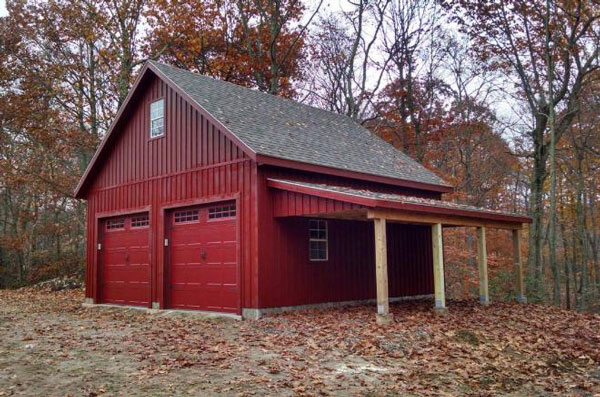
It is possible to maintain smooth operation of garage doors by lubricating them. It keeps the door from getting rusty and helps to prevent it from squeaking. You should lubricate your door on a regular basis, and you should use the right kind of lubricant. Different lubricants work better than other. If you don't know what lubricant to use, talk to a professional.
Garage door lubricant can be bought at your local hardware store. Some lubricants can pose a danger. It is important that you verify the product's toxicology. The best lubricants for lithium-based spray-ons are lithium-based lubricants. These lubricants are simple to use and a great option to lithium grease. Use a rag to evenly spread it.
You can also use a rag to clean the hinges of your garage door. This prevents grease from getting on your hands. The hinges allow panels to be folded and unfolded. The hinges might need to be lubricated.

A silicone lubricant is another way to lubricate your garage doors. These lubricants are usually sold as a spray, and they can be applied in different temperatures. Silicone lubricants form a transparent protective film that leaves a layer of tack-free material on your garage door.
Before lubricating your garage door, you should turn off the power. Next, use a rag to clean the hinges. After you have cleaned the garage door you can lubricate it. You should only lubricate the metal rollers and not the nylon ones. A lubricant should also be applied between rollers and shaft.
Depending on the brand of your door, you might need to lubricate it more frequently. Some models, such as the BMW 3 Series, will need lubrication at least every three month. Others should be lubricated at the very least once a month. A lubricant too heavy can make your door unbalanced. Unbalanced lubricants can lead to dangerous situations.
There are many types available on the market. The most popular are the lithium-based spray-on and silicone lubricants. Those containing lithium grease are best suited for lubricating metal parts. Easy application is a key factor in choosing the right lubricant to use for your garage doors. It is important that the lubricant does NOT collect dirt or dust.

While you're lubricating your garage door, you may want to test its movement. You should move your garage door back-and-forth to ensure that the lubricant has been evenly distributed. Oftentimes, an excess amount of lubricant can cause your garage door to be less effective and may even rust.
Even though you can lubricate the door on your own it is important to be careful. You can get many garage door parts clogged up with dirt and other debris. By cleaning and lubricating them, you can ensure that they will last for a long time.
It is always a good idea to lubricate your garage door in the spring. North Carolina can be cold. It is easy for dirt, dust and other contaminants to get inside your garage.
FAQ
How can I tell if my home needs to be renovated or remodelled?
First, consider whether your home has been updated in recent times. A renovation might be in order if the home has not been updated for some time. If your home appears brand-new, you might consider a renovation.
You should also check the condition of your home. A renovation is recommended if you find holes in your drywall, peeling wallpaper, or cracked tiles. It's possible to remodel your home if it looks good.
You should also consider the overall condition of your house. Is the structure sound? Are the rooms well-lit? Are the floors spotless? These are essential questions to consider when choosing the type of remodeling you want.
How much would it be to renovate a house vs. what it would cost you to build one from scratch?
A home gutting involves the removal of all interior items, including walls, floors ceilings, plumbing and electrical wiring, fixtures, appliances, and fixtures. It's usually done when you're moving into a new place and want to make some changes before you move in. Due to so many factors involved in the process of gutting a property, it can be very costly. Depending on what job you do, the average cost for gutting a house is $10,000 to $20,000
A builder builds a house by building it frame by frame. Then, he adds walls and flooring, roofing, windows and doors. This is often done after purchasing lots of land. Building a home usually costs less than gutting and can cost between $15,000 and $30,000.
It all depends on what you plan to do with your space. You'll need to spend more if you plan to gut your home. It doesn't matter if you want a home built. You can design it yourself, rather than waiting for someone else.
Which order should you renovate the house?
The roof. The plumbing follows. Third, the electrical wiring. Fourth, the walls. Fifth, the floors. Sixth, the windows. Seventh, the doors. Eighth is the kitchen. Ninth, the bathrooms. Tenth, the garage.
After you have completed all of these tasks, you will be ready to go to the attic.
Hire someone to help you if you don't have the skills necessary to renovate your home. Renovating your own house takes time, effort, and patience. And it will take money too. It will take time and money.
Although renovations are not cheap, they can save you a lot of money in the end. You will enjoy a more peaceful life if you have a beautiful house.
How much does it take to tile a bathtub?
You might want to go big if you are going to do it yourself. A full bathroom remodels an investment. If you think about the long-term advantages of having a gorgeous space for years to follow, it makes good sense to invest quality fixtures.
You can make a big impact on how your room looks. Here's how to choose the right tiles for your home, regardless of whether it's a small renovation or major project.
The first step is to decide what type of flooring you would like to install. Ceramics, porcelain, stone, and natural wood are common choices. The next step is to choose a style. Finally, pick a color palette.
For large bathroom remodels, you will likely want the tiles to match the rest of your room. You could choose to use white subway tiles for the kitchen and bathroom, while using darker colors in other rooms.
Next, determine the size of the project. Is it time to update a small powder room? Or would you prefer to add an extra bedroom in your master suite with a walkin-in closet?
Once you have determined the scope of your project, go to local shops and look at samples. This allows you to get a feel and idea for the product as well as its installation.
For great deals on porcelain tiles, you can shop online. Many retailers offer free shipping and discounts on bulk purchases.
What is the average time it takes to remodel a bathroom.
A bathroom remodel typically takes around two weeks. This can vary depending on how large the job is. Some jobs, such installing a vanity and adding a shower stall, can take only a couple of days. Larger projects such as removing walls, laying tile floors, or installing plumbing fixtures may require several days.
A good rule of thumb is to allow three days per room. You would need 12 days to complete four bathrooms.
What is the difference between a remodel and a renovation?
Remodeling is making major changes to a particular room or area of a given room. A renovation is minor changes to a room, or a portion of a bedroom. A bathroom remodel can be a large project while an addition to a sink faucet can be a small project.
Remodeling entails the replacement of an entire room, or a portion thereof. A renovation is merely changing something in a particular room. A kitchen remodel might include the replacement of countertops, sinks as well as appliances, lighting, and other accessories. A kitchen remodel could also include painting the walls or installing new lighting fixtures.
Statistics
- About 33 percent of people report renovating their primary bedroom to increase livability and overall function. (rocketmortgage.com)
- bathroom5%Siding3 – 5%Windows3 – 4%Patio or backyard2 – (rocketmortgage.com)
- 5%Roof2 – 4%Standard Bedroom1 – 3% (rocketmortgage.com)
- $320,976Additional home value: $152,996Return on investment: 48%Mid-range average cost: $156,741Additional home value: $85,672Return on investment: (rocketmortgage.com)
- Attic or basement 10 – 15% (rocketmortgage.com)
External Links
How To
How to Remove Tile Grout from Floor Tiles
Tile grouting is something that most people don't even know they have. It is used to seal the joints between the tiles. There are many types available today. Each is used for a specific purpose. Here we will show you how to remove tile grout from floor tiles.
-
Before you can begin the process, ensure that you have all necessary tools. You will need a grout cutter and grout scraper.
-
Now it is time to clean the grout and remove any debris or dirt that has gotten under the tiles. The grout cutter can be used to cut the grout and remove any loose tiles. You must be careful not to scratch any tiles.
-
Once you have cleaned everything up, take the grout scraper and use it to clean off any remaining grout. If no grout is left over, you can proceed to step 4.
-
After you have done all the cleaning, you can move on to the next step. Soak one of your rags in water. Make sure that the rag is completely wet. You can wring the rag out if it has become wet. This will ensure that any water remains in the rag.
-
Place the wet cloth on the joint where the tile meets with the wall. The grout will begin to crumble if you press down hard on the rag. Slowly pull the rag toward you, and keep pulling back and forth until all of the grout is gone.
-
Repeat steps 4 to 5 until grout is gone. Rinse the ragout and repeat the process if necessary.
-
When you are done removing grout, clean the tiles using a damp cloth. Let dry completely.